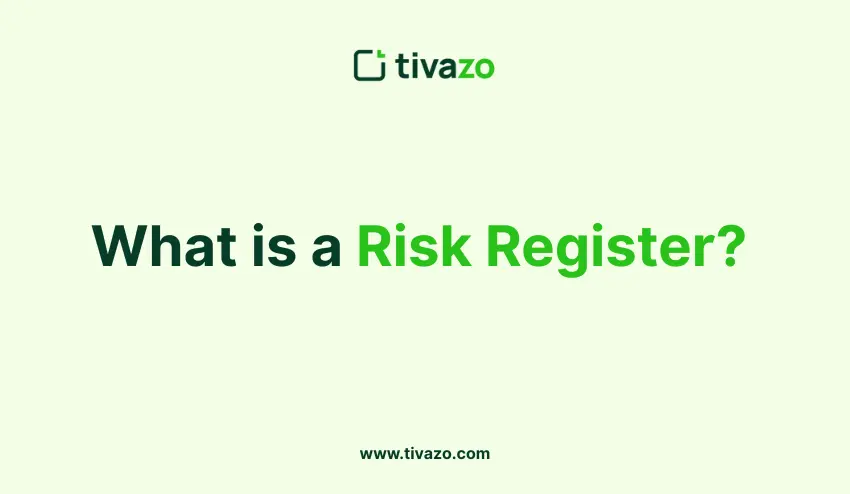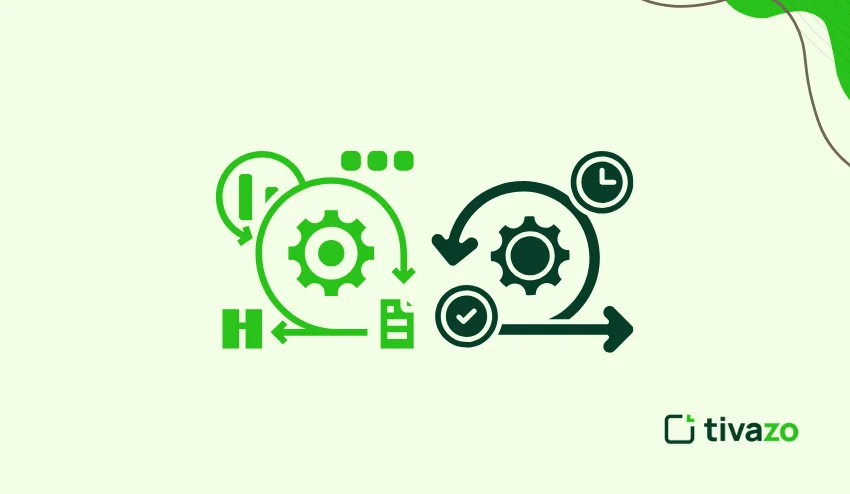No matter how well-planned any project is, it is associated with certain uncertainty. Timescales run late, cost constraints are tightened or things go wrong. This is why a risk register is one of the most effective yet simple tools project managers and business leaders use to identify, monitor, and address the risks before they become costly issues.
A risk register is a living document that documents the possible risks, their effects, and what needs to be done to manage them. Teams do not respond to surprises but stay ahead of the issues, minimize confusion, and keep the projects on schedule. It could be construction, IT or business activities, a risk register would give clarity in decision making.
We will deconstruct what a risk register is, why it matters and how to develop one that really works in this guide. You will also get real-life risk register examples, a template ready to use and practical tips to make it a worthwhile tool to the project management toolkit.
What is a Risk Register?
A risk register is a formal document or database that is used to document and maintain risks in a project, business process, or organization. It is a focal point where all the potential risks are documented and other significant facts, such as:
- An explanation of the risk.
- The chances of it occurring.
- The possible consequences in case it happens.
- Who is to deal with it?
- The mitigation plan or action plan.
Consider it a roadmap and safety net. The risk register ensures that all risks are in a single location rather than being discussed during scattered meetings or forgotten e-mails, hence easier to monitor and respond by teams.
Risk registers are typically kept in Excel, project management software or dedicated risk tools by most project managers, but it is not the form that matters as much as the discipline of updating the risk register on a regular basis. A properly kept risk register may be the difference between a project that can withstand a challenge and one that fails to do so. Most project managers use risk registers in Excel, project management software, or specialized risk tools, but the format isn’t as important as the discipline of updating it regularly. A well-maintained risk register can mean the difference between a project that survives challenges and one that collapses under them.
What is the importance of a Risk Register?
A risk register is not paperwork. It is a useful device that provides organizations with an organized method to envision problems prior to their occurrence. In its absence, teams are usually caught off guard by problems that they would otherwise have anticipated and averted.
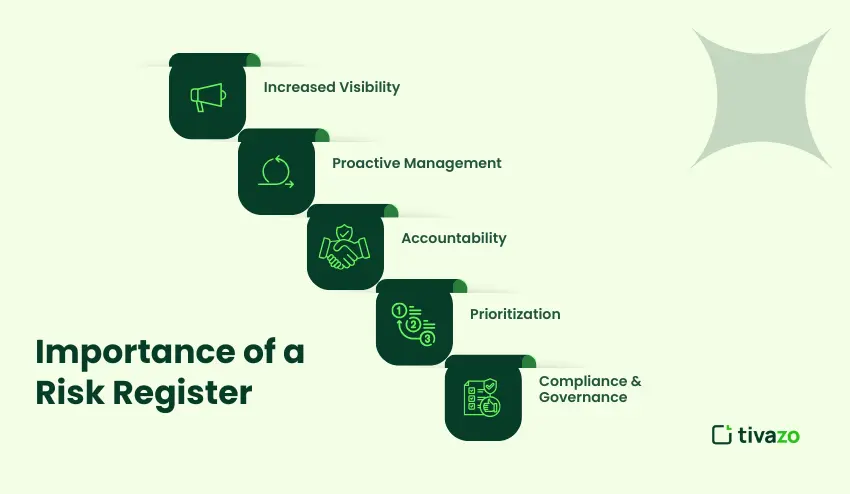
Here’s why it matters:
- Increased Visibility -All the risks identified can be stored in a single location and all the people can be easily on the same page.
- Proactive Management – Teams are able to plan response activities rather than respond at the last minute becoming a proactive management.
- Accountability -Every risk has an owner, so someone is in charge of monitoring and controlling it.
- Prioritization – Helps leaders know the difference between a minor risk and one that might derail a project or strategy.
- Compliance & Governance- In most industries, organizations have to write down risks to be audited and regulated.
Concisely, a risk register is not so much about problem tracking but rather a matter of creating resilience. It enables companies to plan, foresee, and remain goal-oriented despite setbacks.
Important Items in a Risk Register.
An effective and properly organized risk register has a number of key components that render it effective and actionable. These are the main elements that you must include:
- Risk ID /Description – Each risk is assigned a unique identifier and the description of what might go wrong.
- Risk Category- Classify risks as operational, financial, compliance, strategic, or other risks that pertain to your project.
- Probability / Likelihood- Measures the likelihood that the risk will happen, typically on a low to high scale.
- Impact / Severity – Scale the possible impact of the risk on your project, again on a low-to-high scale.
- Risk Owner – Designate someone to oversee and deal with the risk.
- Mitigation Plan / Response – Describe the measures that will be implemented to minimize or eradicate the risk.
- Status / Updates- Monitor progress, changes or resolutions to make sure risks are proactively addressed.
With such elements, your risk register will be a complete decision-making, monitoring, and accountability tool. All risks are well defined, evaluated and allocated and it becomes easier to take action before issues get out of hand.
The Step-By-Step Guide to a Risk Register.
One does not necessarily need to make a risk register complex. In order to produce a working document, useful, do the following:
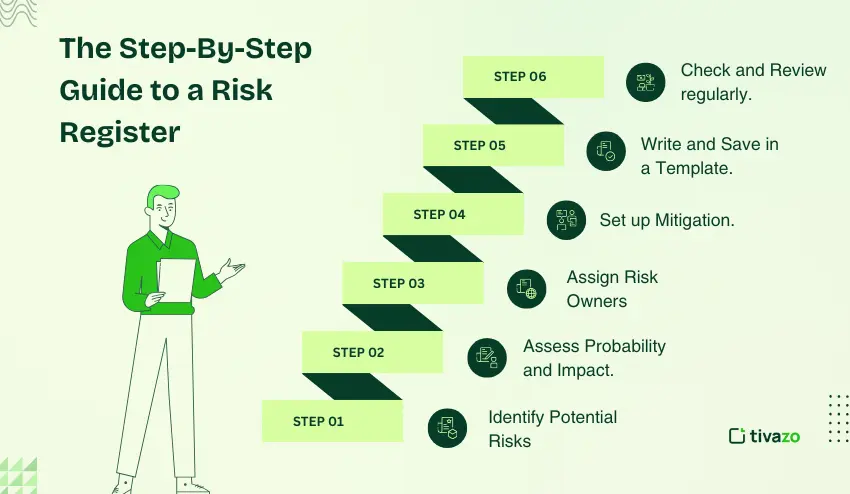
- Identify Potential Risks
- Brainstorm the risks with your team and stakeholders. Consider operational, financial, compliance, and strategic risks.
- Document all risks such as low-probability risks since there are no risks that have been omitted.
- Assess Probability and Impact.
- Determine the likelihood of the risk happening and the extent of the impact of each risk.
- Measure risks on a simple scale (low, medium, high) or on a numerical scale.
- Assign Risk Owners
- Designate a person to monitor all risks.
- Accountability and action are the results of a clear ownership.
- Set up Mitigation.
- Decide how to address every risk: avoid, mitigate, transfer or accept.
- Determine the precise actions, resources and timeline of all mitigation plans.
- Write and Save in a Template.
- Place your risk register in an Excel sheet, Google sheet or project management software.
- Enter all the key items: ID, description, category, probability, impact, owner, mitigation, and status.
- Check and Review regularly.
- The risks change; refresh your register periodically.
- Adjust mitigation plans, change statuses and add risks.
A well-managed risk register will ensure that your project is on schedule, reduce unexpected events and improve team responsibility.
Risk Registers, Tools, and Software.
Though you can create a risk register in a basic Excel sheet, it can be more effective, improve collaboration and scalable with tools and software. Here are some common options:
Excel or Google Sheets
- Small projects are easy and configurable.
- Easy to distribute and update and needs to be maintained manually.
Project Management Software (e.g., MS Project, Asana, Trello)
- Integrates risk tracking and project schemes.
- Assists in the assignment of risk owners, due dates and status reports.
Specialized Risk Management Software (e.g., MetricStream, Riskwatch, LogicManager).
- Offer robust features like automated risk scoring, dashboards, and reporting.
- Best fitted to larger organizations or project with regulatory requirements.
Collaboration Platforms
- These tools as Jira or Monday.com can be used to see the visibility and real-time updates on a team-wide level.
- Risks are dynamically addressed by assistance groups on a number of projects.
Your risk register is maintained up to date with software, easily accessible, and in use. It also reduces human error and supports the best decision making in complex projects.
Best Practices to use a Risk Register.
The use of a risk register becomes effective when it is applied on a regular and strategic basis. The following are the best practices that will maximize its value:
- Keep It Updated Regularly
- Risks change with time, therefore, revise and update register regularly.
- Add new risks and resolved risks should be marked.
- Involve All Stakeholders
- Involve team members, project managers and executives in risk identification and risk management.
- Teamwork guarantees the big picture and raises the level of responsibility.
- Have Simple and Unambiguous Categories.
- Classify categories (operational, financial, compliance, etc.) to be easier to prioritize.
- Consistency assists in following trends and comparing projects.
- Combine With Project Management Plans.
- Tie your risk register to project schedules, budgets and objectives.
- This makes risk management not an activity but a day to day activity.
- Leverage Risk Reporting
- Use dashboards or summary reports to report on critical risks to stakeholders.
- Reporting enhances transparency and aids in decision-making.
Adhering to these practices will help to keep your risk register a useful tool and not a document on paper. It turns risk management into a reactive process into a proactive strategy.
Common Mistakes to Avoid
Even the most effective risk registers fail in case they are not properly managed. These are some of the pitfalls to avoid:
- Not Updating the Register
- It is useless to create a risk register and leave it without any action.
- Risks should also be tracked and revised on a regular basis in order to be relevant.
- No Clear Ownership
- When the risk owners are not delegated, confusion and inaction will occur.
- Each risk must be assigned to an individual to deal with it.
- Neglecting Low-Probability, but High-Impact Risks.
- Certain risks are unlikely to happen, but can be very disruptive.
- When prioritizing, consider probability and potential impact.
- Excessively complicated the Template.
- A sophisticated risk register may be difficult to maintain and comprehend.
- Make it easy, simple and organized to the team.
By eliminating such errors, your risk register will still be a viable tool that will help in proactive project management and decision-making.
Next Level Tips for Using Risk Registers
Once the risk register has been created you can step it up another gear and ensure that it will become a living force for actual project success. Here are some next level tips:
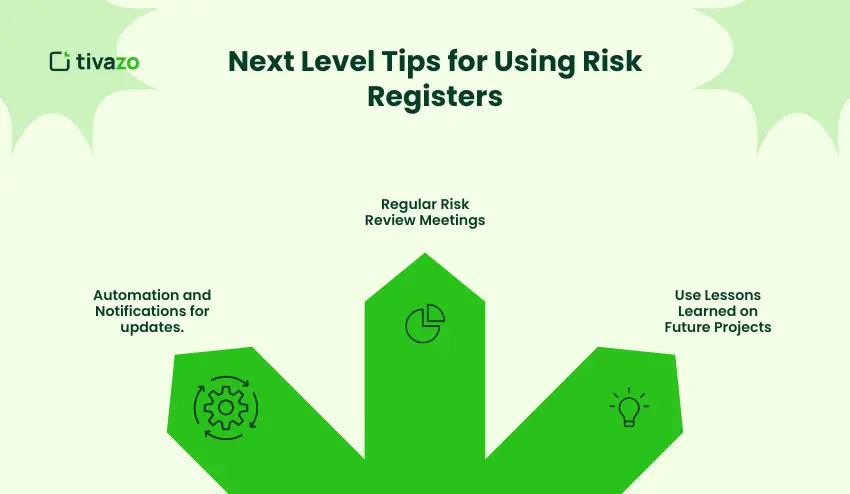
- Automation and Notifications for updates.
- Use leverage project management tools used for automation skills, or use a specific risk program.
- Set up notifications for all approaching deadlines, risk status changes, or risk entry. This ensures that nothing slips through the cracks.
- Regular Risk Review Meetings
- Regular planned review of all risks in progress.
- You can review the progress of mitigation plan, reassess the likelihood of the risks occurring and impacts, and include any additional risks that have been identified. A risk register is a living document that can be actioned with regular reviews.
- Use Lessons Learned on Future Projects
- At the end of the project, review the risks that took place, how they were managed, and what could have gone better.
- Amend templates and guidelines to ensure lessons learned are considered to improve risk management for future projects.
These higher level strategies will make your risk register more than a document, it will become a strategic tool for better planning of project work, lessen the number of surprises, and improve the greater works performance of the team.
Conclusion
Risk register is not a mere document but a very important tool to handle uncertainty and keep projects on track. Through recording, evaluating, and tracking risks, teams are able to be proactive and not reactive, minimizing the number of surprises and maximizing results.
Knowing the elements, templates, and best practices will make your risk register both useful and efficient. It is as transparent as it is accountable and offers a formal approach to risk management, whether on small projects or a large enterprise initiative.
Begin producing or improving your risk register now to improve project planning, increase team confidence, and produce improved results. Risk management may be the key between a successful project and a failed project.
